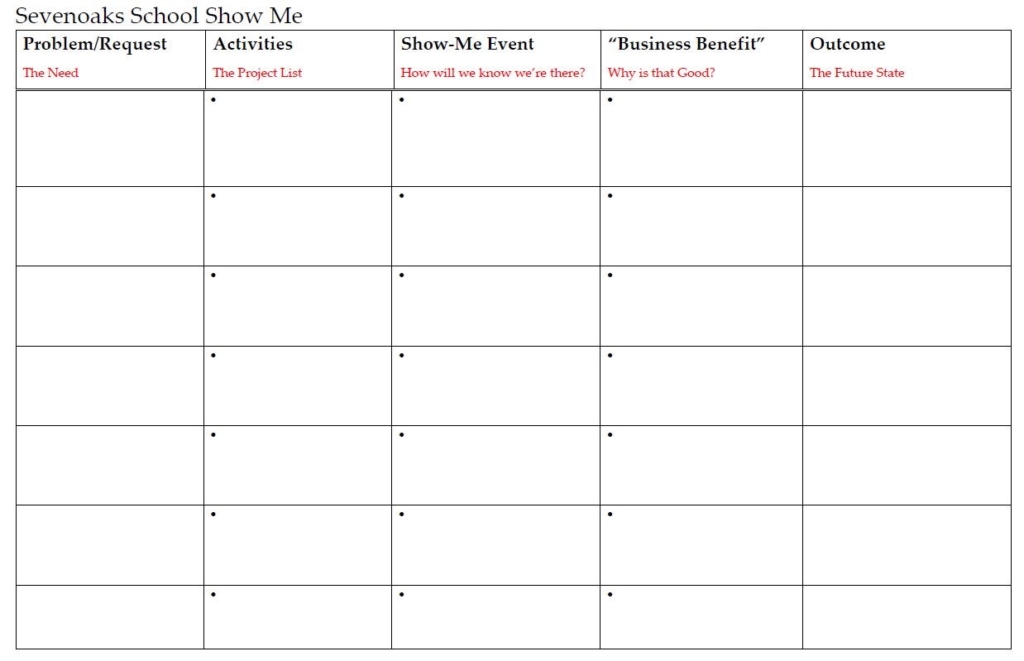Thought Piece: Do Digital Directors Dream of Electric Strategy?

Templates for Digital Strategy
Managing IT in independent schools, we have much in common. This explains why we all sign up for the Digital Strategy Conference at Radley on 29 November 2018. Yet our schools are all defined by unique variations in size, student mix (age, gender, day/boarder), curriculum, location, campus, budget, ethos, Leadership, Governance and style. One-size cannot possibly fit us all when it comes to the detail of Digital Strategy so templates provide a useful toolkit for us to build our own brand, picking and choosing the themes that might work for each of us.
If the Conference has a collective ambition to make IT work more like electricity, then sharing templates and stories is a good way to be inspired and supported. At risk of preaching to you, the converted and extremely knowledgeable, and fully aware that this Sevenoaks Story is a high level view, here are a few template thoughts based on the Digital Strategy that has powered Sevenoaks School for over 12 years.
1. It’s not just About the Technology
Technology shifts ever faster. Many of the devices we use today will quickly become outdated, so digital strategies need to be adaptive. Messages posted to the HMC IT Managers’ Forum do indeed focus on specific technologies but also cover safeguarding, online profiles, cybersecurity, procurement, budgets, training and much more. We also work with changing economic, political and social climates. It is about much more than just technology. It’s about change.
To maintain innovative insight at Sevenoaks, trusted innovators have freedom to run small-scale projects testing new technologies. Some innovations get the thumbs down (certain brands of smart glasses) while others (VR and Robotics) prove their worth in teaching and learning.
2. It’s all About the Need
In essence, we all know our starting point for strategic planning is ‘A’ – where we are now. We also know we need to make progress to get to where we want to be – ‘B’. The precise route from A to B has to start with our School’s needs. The better this need is articulated at Leadership level, the easier it is to shape the underpinning digital support. If we get this right, the Digital Strategy enables the school to do what it wants. Even if Leadership changes, a good strategy can be adapted, with different technologies plugging in as required.
Do we ever reach B? Possibly not. By the time we get to 2020 (Sevenoaks School’s cur rent Horizon), the school will already have shifted its focus towards 2032 and the school’s 600th year.
3. What’s in it for Me?
Schools carry out so much more in 2018 than simply teaching and learning. We also do Research, Arts Centres, Sport Centres, Residential Courses, Social Impact, Outreach, Community Programmes, Philanthropy, Fundraising, Building, Project Management, not to mention first-class Administration and Operations. And IT underpins all of these activities, every day, in the same way that electricity powers everything we all do.
To be able to draw the Route Map from A to B requires bottom-up intelligence as well as top-down vision. By involving the community at all stages, we can understand their needs and communicate what’s happening, in what sequence and with what benefit to them.
4. The Importance of Stable Foundations

Any programme of change must be built on a solid platform. Although it often takes more time and money than expected to establish the bedrock, there is little point introducing end-user devices that will not work when they are plugged in.

This applies as much to staffing as to technical infrastructure. Until a School invests in the right number people with the right level of skill, its vision and ambition cannot be supported reliably. There is a risk of projects falling apart, delivering too slowly or failing altogether.
A Sample Template: ‘Show Me’

This ‘Show Me’ template is used effectively at Sevenoaks School to capture, analyse and understand what is needed. “Art students need an iPad Pro” defines a need, but clearer articulation will deliver results more successfully. Working through this example:
What is the Need (Problem/Request)?
IB Art students need to submit a Sketchbook for final assessment. If it has been created manually, each page must be scanned and assembled into one document for upload to the examining board. This takes time, is cumbersome and generates very large files.
Outcome (Future State)
Every Art IB Student uses an iPad Pro with Apple Pencil to create their sketchbook digitally from the outset. Manual content can easily be incorporated to create file as their final submission.
‘Business’ Benefits
- Saves time
- Looks better
- Builds digital creative skills
- Raises attainment
#### Show Me Event (How will we know when we are there?) ####
An U6 student spends more time on their Extended Essay because the HL Art sketchbook was completed faster.
#### Activities
- Discuss with Art staff and students
- Agree the right model of tablet and inking device
- Identify appropriate apps that are secure and easy to use
- Plan budgets, including financial support where applicable
- Implement and Monitor
If we get it right, to misquote Tyrell, we can provide light that burns “so very, very brightly”.
Sarah Williamson
Director of Information Systems
Sevenoaks School
